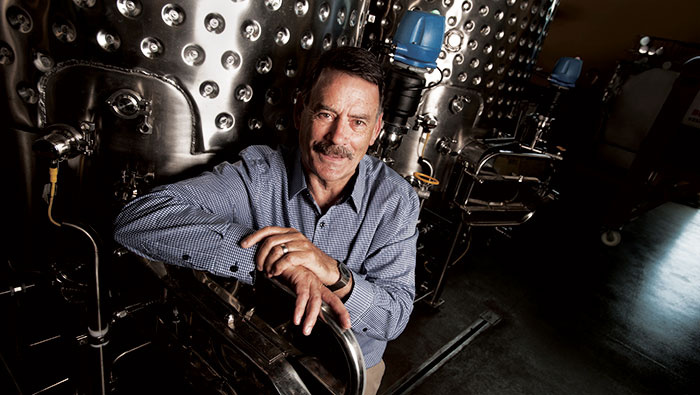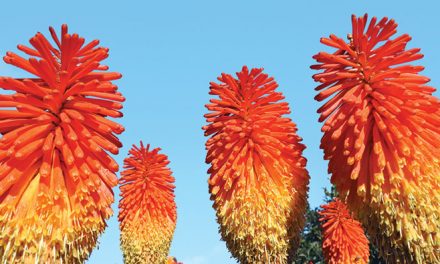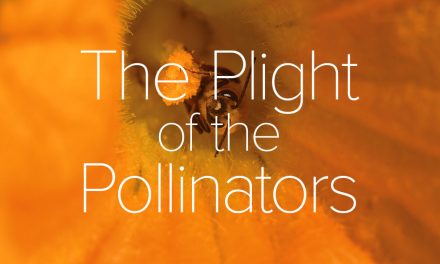One gallon of wine from one gallon of water by 2020
Photos by Karin Higgins and Gregory Urquiaga
In an effort to confront severe drought and long-term climate change, UC Davis researchers are teaming up to help the state’s epic wine industry perform its liquid alchemy with much less water.
Processing one gallon of wine takes about six gallons of water, and vineyard irrigation — depending on location and grape variety — can more than double that figure.
The UC Davis mission: Within five years demonstrate how to trim water use to just a gallon of water per gallon of wine. It’s a feat of biblical proportions challenging a diverse team of plant biologists, chemists, soil scientists and engineers to target wine-grape vines and rootstocks, vineyard irrigation and winery processing systems.
The most water-efficient wild grapevines in the U.S. grow in dry regions — like the hills and flatlands of West Texas, just now emerging from a multiyear drought.
This summer, plant geneticist and breeder Andy Walker and one of his graduate students canvassed the dusty back roads between San Antonio, Waco and Austin. The expedition, yielding 104 plant cuttings, was one of many made to Texas over the last 25 years by Walker, who claims he can spot a wild grapevine from the highway at 65 miles per hour.

Roger Boulton at the LEED Platinum-certified UC Davis winery
No genetic silver bullet
“It’s going to be tricky,” said Walker of his team’s quest to breed drought-tolerant rootstocks that root vigorously, tolerate increased soil salts, support high-quality fruit production and adapt to California’s diverse grape-growing regions.
Yields in the high-dollar vineyards of Napa and Sonoma average only 4 to 5 tons per acre, but irrigation needs there are low and groundwater is in good supply.
To the south and inland near Lodi, where one-third of California’s zinfandels originate, annual yields average 10 tons per acre, but the warmer, drier climate intensifies demand for irrigation water.
“And when you get into the San Joaquin Valley, where yield is king, it’s an entirely different story,” Walker said. “Valley growers keep asking how they can continue to get yields of over 15 tons per acre but with half the normal amount of water.”
That’s probably not going to happen. But Walker is betting that those drought-seasoned Texas grapevines contain genes that will enable California growers to produce high-quality wine grapes and optimize yield and water use. He expects to unveil the first drought-tolerant rootstocks in just five years, with more to follow eight and 10 years from now.
Meanwhile, other researchers have already moved a new hyper-efficient, experimental irrigation system from drawing board to vineyard. Eventually, it should help growers conserve water and better control flavor profiles throughout their vineyards.
“We expect to fill our water tanks this year, storing enough water for two years of winery operation.”
—Roger Boulton, chemical engineer and winery operations expert at UC Davis
Vine-specific irrigation
“We’re trying to give each vine exactly the amount of water it needs to produce high-quality fruit,” said David Block, a chemical engineer and chair of the Department of Viticulture and Enology who is helping develop a system for monitoring each vine’s water status, then quantifying and delivering just the right amount of water.
A prototype irrigation system was designed and installed last year at UC Davis’ Oakville Experimental Vineyard in the Napa Valley.
Its multivalve components are housed in plastic storage tubs and linked to bundles of plastic tubing strung down the vineyard rows.
Operated by wireless, remote control and fueled by a low-power battery, it uses brief electrical pulses to open and close the valves, sending the precise amount of water flowing independently to each vine.
Inexpensive, robust sensors, spotted throughout the vineyard, eventually will determine each vine’s water requirements by gauging how hard it is working to pull water from the soil.
The researchers expect to have enough data by the end of the 2016 growing season to evaluate and finetune the experimental network. To be commercially viable, it will need refined sensor and data-management systems, and the per-vine cost must drop from the experimental $50-to-$100 range down to the $2-to-$5 range, Block said.
With dollar signs looming at every turn of the ambitious water-to-wine project, the researchers are keenly aware that their innovative solutions must be economical. Winery processing systems are no exception.

A prototype irrigation system uses remote sensors to give each vine the precise amount of water it needs.
Capturing and recycling H20
Water conservation was a top priority when the Department of Viticulture and Enology planned a decade ago for a modern teaching and research winery. Now ending its sixth crush season, the winery continues to evolve and install pioneering water systems, consolidating much of the equipment in the adjacent Jess S. Jackson Sustainable Winery Building.
“The current drought only highlights why these systems are so important to complete,” said Roger Boulton, a chemical engineer and winery operations expert who has long envisioned the campus winery as a model for sustainable processing.
The main winery building, also housing brewing and food-processing facilities, was designed to capture rainwater from its roof and surrounding landscape for storage in outdoor tanks. By this winter, rainwater will also be captured from the roofs of the original Robert Mondavi Institute buildings.
“We expect to fill our water tanks this year, storing enough water for two years of winery operation,” said Boulton, noting that the winery should be operating completely independent of the campus water grid by fall 2016.
Sustainable cleaning for wineries
“Clean in place” systems, with revolving spray nozzles to clean inside fermentation tanks and then capture and recycle the wash water, are critical for cutting water use.
The large fermentation tanks also are specially designed with ultra-smooth interior walls, discouraging microbial growth and decreasing the winery’s wash-water demands.
“These technologies will allow us to capture our waste streams, separate the solids, filter them and then store them for reuse in the winery,” said campus winemaker and winery manager Charles “Chik” Brenneman.
Eventually, 90 percent of the treated solutions can be reclaimed and used 10 times over for winery cleaning.




